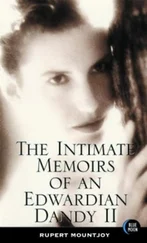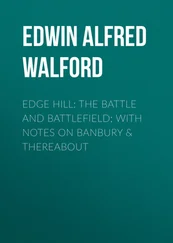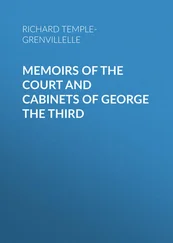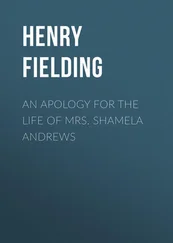When the service concluded, Mrs. Kennedy with Caroline and John, one in each hand, led the mourners from the cathedral and stood on the outside steps while the casket was removed and placed on the caisson. I was standing just behind and to the right of Senator Ted Kennedy, who was next to Mrs. Kennedy, and the children. When the casket was secured, directly in front of us, the military rendered a salute to their fallen commander in chief. I saw Mrs. Kennedy lean down to John and whisper something into his ear.
He thrust his tiny shoulders back, raised his right hand to his brow, and in an emphatic gesture never to be forgotten by anyone who saw it, just as the Marine colonel had instructed, three-year-old John Fitzgerald Kennedy Jr. saluted his father.
It was almost more than I could bear. I looked around and saw colonels and generals and colleagues—some of the toughest men I knew—and they too were fighting to hold back tears.

THE PLAN HAD been for Caroline and John to accompany their mother to Arlington National Cemetery and ride with her. But at the last minute, Mrs. Kennedy decided to have them return to the White House. We had run out of cars, so Agents Foster and Wells located one being used by the Joint Chiefs of Staff, and confiscated it for their use. Needless to say, the relationship between the Secret Service and the Joint Chiefs of Staff was rather strained for a while.
While Caroline and John went back to the White House, Mrs. Kennedy rode behind the caisson, the presidential flag, and Black Jack to Arlington National Cemetery. It was now midafternoon as we approached the cemetery. People lined the streets the entire way, and you could see their faces filled with grief, tears rolling down their cheeks. As we inched our way across Memorial Bridge, leading the mile-long procession of limousines filled with dignitaries, I looked up, straight ahead on the hill to the spot Mrs. Kennedy had chosen for the grave site. A sudden realization hit me like a punch.
I travel across this bridge two times every day, and from now on, I will be looking at President Kennedy’s grave as I cross into Virginia from Washington.
If only I had reacted quicker, run faster . . .
We arrived at the grave site and watched as the honor guard removed the president’s casket and carried it to the burial site. As we walked slowly to the burial site, I heard a sound, a slight roar, that got louder and louder as fifty Air Force and Navy jets flew over in tribute. Then, another roar, but this time the sound seemed familiar to me, that high-pitched whine of a perfectly tuned set of jet engines. It was Air Force One flying very low with Colonel Jim Swindal at the controls and the crew on board that knew and served President Kennedy so well. As Swindal dipped the wings of Air Force One in salute, I clenched my jaw. Swallowed hard.
As the service progressed, I knew there was a moment approaching and I was concerned as to how Mrs. Kennedy would react. It was the twenty-one-gun salute, three volleys by each of seven riflemen. How would she react to gunfire only three days after that sound cracked through the air in Dallas? She was standing next to Robert Kennedy near the end of the casket. I was about to walk to her when the cemetery superintendent leaned over and warned her what was about to happen.
She trembled with each and every shot, but managed to maintain her composure.
It was time to light the Eternal Flame. From the moment she started planning this heartrending day, she had the idea of an eternal flame—just like the one at the Tomb of the Unknown Soldier in Paris. She overcame the objections and negative attitudes of everyone who said it was too complicated a job to be done in time. I was proud of her intestinal fortitude and positive attitude, which enabled her to do it. The Eternal Flame was her triumph.
She was handed a lighted torch and bent forward to ignite the flame. The fire danced as she passed the lighted torch to Bobby Kennedy, who in turn handed it to Ted, each symbolically igniting the flame. The United States flag that had draped the casket was folded and presented to Mrs. Kennedy. It was time for Taps, the final ending to a military funeral.
The bugler, standing off to the side, started playing and the sound rolled through the hills surrounding Arlington National Cemetery. He was feeling the pressure of performing before thousands in person and millions on TV. He flubbed a note and recovered quickly. I felt sorry for him, knowing he would never forget it, and the world had it recorded for posterity.
Mrs. Kennedy thanked the military commander and we entered the waiting limousine and drove back to the White House.
The day was far from over. First there was a small reception in the upstairs Yellow Oval Room, in the residence quarters, for a few special people: Charles de Gaulle; Prince Philip; Emperor Haile Selassie; Ireland’s president, Éamon de Valera. After offering her sincere thanks to these men, she went to the Red Room, where a larger reception was held for the scores of other foreign dignitaries. This involved a lot of people and I was concerned about her being able to stand the strain. If she felt it, she didn’t show it.
I thought this would certainly be the end for the day and she would go to the second-floor living quarters and retire for the night. Instead, as the reception was winding down, she motioned to me.
“Yes, Mrs. Kennedy, what can I do for you?”
“I may want to go back to Arlington later,” she whispered. “I’ll call and let you know.”
I was exhausted, and she hadn’t slept any more than I had. How she could keep this up I didn’t know. I notified Paul that we needed to make arrangements with the superintendent’s office at Arlington. This was to be completely private, and kept absolutely confidential.
When Mrs. Kennedy finally went to the second floor, I went to the Map Room and more or less collapsed in my chair. Shortly before midnight, she called.
“Yes, Mrs. Kennedy,” I answered.
“Mr. Hill, Bobby and I want to go to Arlington now. We want to see the flame.”
“Certainly, Mrs. Kennedy. I’ll get the car.”
I called Sergeant Watkins and he brought the car around. We took Mrs. Kennedy and Bobby to the cemetery as Paul followed in another car. As we drove across Memorial Bridge, there straight ahead of us flickering on the hillside was the Eternal Flame. It was a moving, very emotional sight.
We drove up to the site and walked to the grave. Mrs. Kennedy had brought a small bouquet of flowers, and she placed them on the fresh earth. Mrs. Kennedy and Bobby knelt and prayed, then stood and looked back across the Potomac at the lights of the memorials. We all got back in the car, and returned to the White House.
No press, no public, complete privacy. Just the way Mrs. Kennedy wanted it.
PART FIVE
After the White House
26
Our Final Year

Clint Hill watches as Mrs. Kennedy visits her husband’s gravesite
The days following the funeral are somewhat of a blur. I was physically exhausted and emotionally drained. I had kept my emotions buried. I could not let Mrs. Kennedy, the other agents, or anyone else, for that matter, be aware of exactly how I felt. I had to be strong and hold up the tradition of the Service. Mrs. Kennedy had been traumatized and she was being so strong. I couldn’t break down. But the truth was, I was overcome with guilt, a feeling of failure, and a sense of responsibility for not being able to prevent the assassination.
Читать дальше













